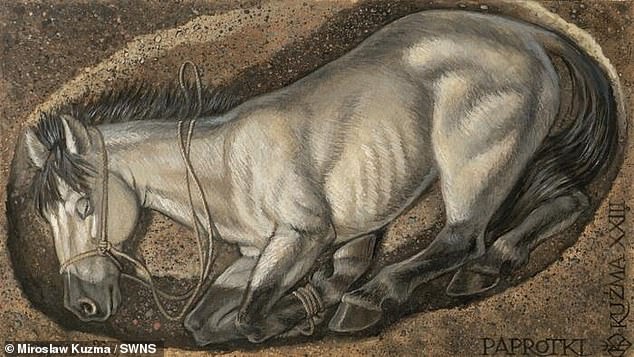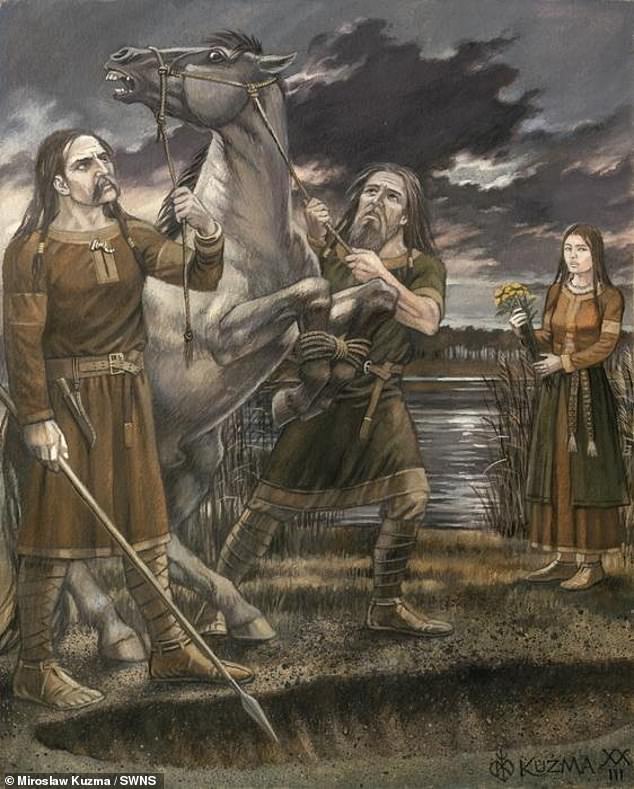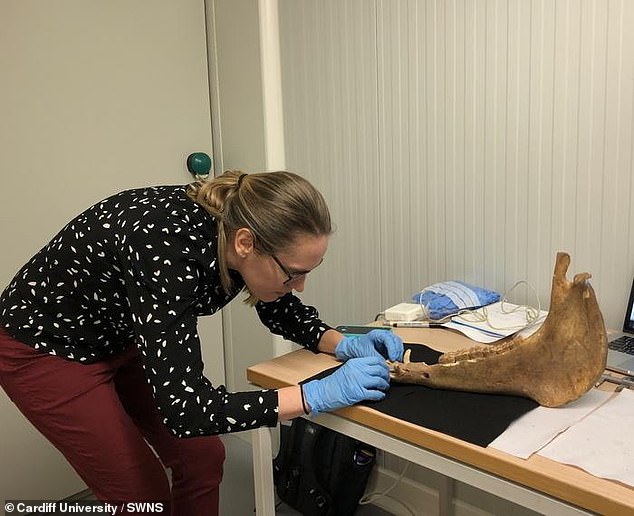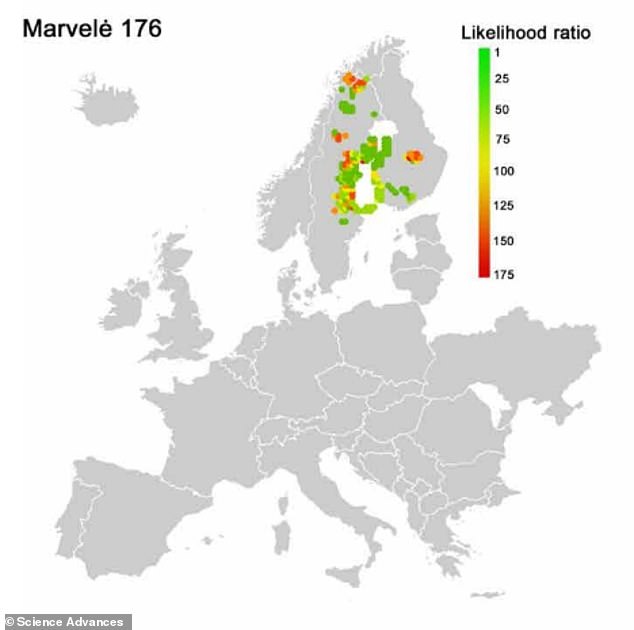Horses brutally slaughtered or even BURIED ALIVE by European pagans as part of cruel rituals 700 years ago were imported hundreds of miles from overseas, research shows
Pagans in Eastern Europe imported horses across hundreds of miles for cruel ritual sacrifices 700 years ago, a new study reveals.
Horses killed and buried in present-day Poland and Lithuania originally came from Sweden and Finland, analysis of horse teeth shows.
As part of a flourishing horse trade, the animals are said to have been transported south on ships across the Baltic Sea.
Researchers say the poor animals were then beheaded or even buried alive in small pits between the first and thirteenth centuries AD.
Historically, pagans sacrificed animals and even other people as gifts to the gods, often in the hope that they would be rewarded with fruitful harvests.
Horses were imported by pagans from Sweden and Finland to Eastern Europe – modern-day Poland and Lithuania – for the sole purpose of being sacrificed between the 1st and 13th centuries AD.

Horses were beheaded or even buried alive in small pits as gifts to the gods between the 1st and 13th centuries AD. This drawing shows a sacrificial horse pit in Paprotki Kolonia, Poland
The research was led by Dr. Katherine French, formerly of Cardiff University’s School of History and Archeology and now based at Washington State University.
“This research dismantles previous theories that locally purchased stallions were selected solely for sacrifice,” she said.
‘Given the unexpected prevalence of mares, we believe that the prestige of the animal, which came from afar, was a more important factor in why they were chosen for this ritual.’
Dr. French and colleagues analyzed horse remains found in nine graves in the Baltic region – spread across present-day Poland and Lithuania, as well as Russia’s Kaliningrad province.
The researchers say horse sacrifice persisted in this region, as evidenced by numerous graves, which date from the 1st to 13th centuries AD.
The animals were said to have been killed as part of a ‘bloody, macabre public spectacle’, in which horses were often beheaded, skinned and halved or quartered with weapons, or even buried alive.

Horses were imported from abroad for sacrifice in Western Europe. This image is a reconstruction of the ritual sacrifice of a horse in Paprotki Kolonia, modern Poland

Researchers analyzed horse remains found in nine graves in the Baltic region (marked by colored squares on this map). The academics knew the horses were buried here, but where did they originally come from?

Dr. Katherine French – formerly of Cardiff University and now at Washington State University – examines a horse mandible to select a dental sample at the University of Białystok, Poland
The researchers used a technique called ‘strontium isotope analysis’, which looked for chemical signatures in horse teeth from 74 animals to identify where they came from.
These chemical signatures – locked in the hard enamel of their teeth – reveal traces of soil and plants that the horses would have consumed at a young age, which in turn can reveal specific locations.
Until now, researchers assumed that sacrificial horses were always locally produced stallions (males).
But the results show that the horses killed and buried in the Baltic region were imported up to 1,500 kilometers from Sweden and Finland.
The origins of the horses varied depending on the burial grounds, and there were also some horses that were produced locally.
For example, horses sacrificed between the 1st and 5th centuries were mostly locally produced, but after that there was a ‘marked increase’ in foreign horses.

This map shows the potential origins of horses buried in one location (Marvele 176 in Lithuania)
The findings also show that the gender of the horse was not necessarily a factor in the choice of sacrifice.
Genetic analysis showed that one in three imported horses was female, challenging previous assumptions that they were always male.
Interestingly enough, researchers believe that the pagans bought the horses from Christians in Sweden and Finland, showing that the two religions collaborated in the pet trade.
“Pagan Baltic tribes clearly bought horses from their Christian neighbors abroad, while at the same time resisting conversion to their religion,” said co-author Dr Richard Madgwick of Cardiff University.
‘This revised understanding of horse sacrifice highlights the dynamic, complex relationship between pagan and Christian communities at the time.’
The research was published in Scientific progress.
